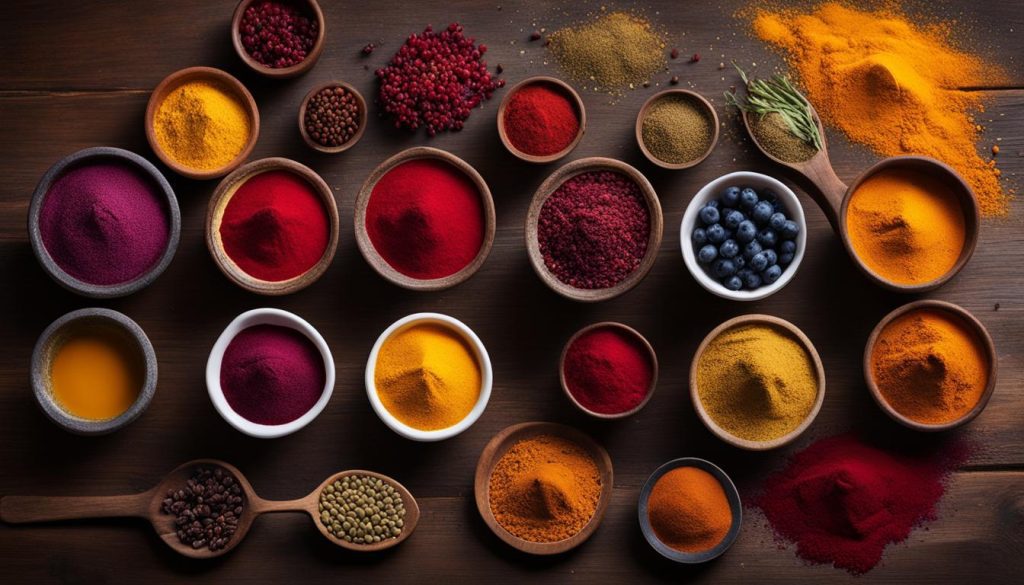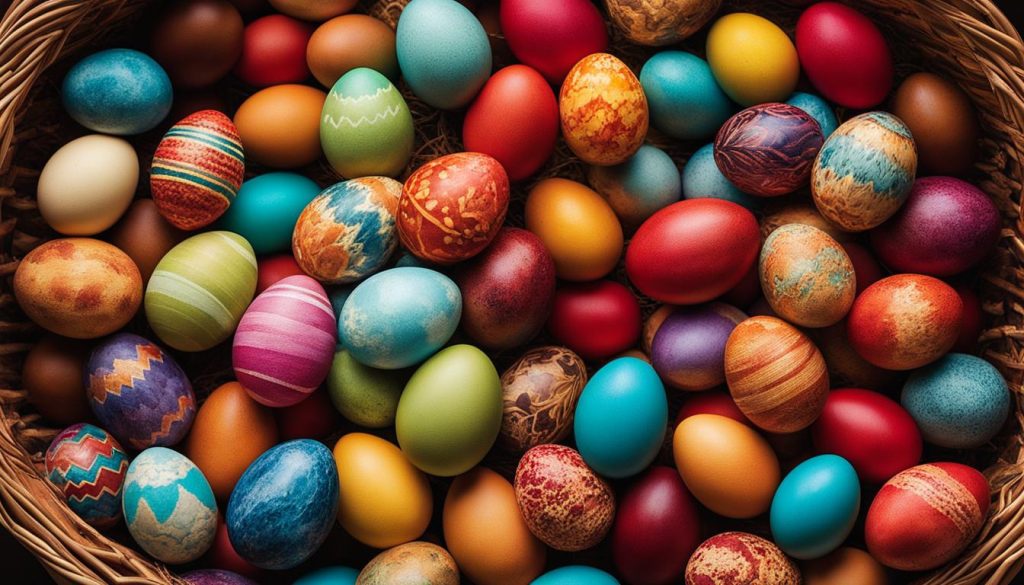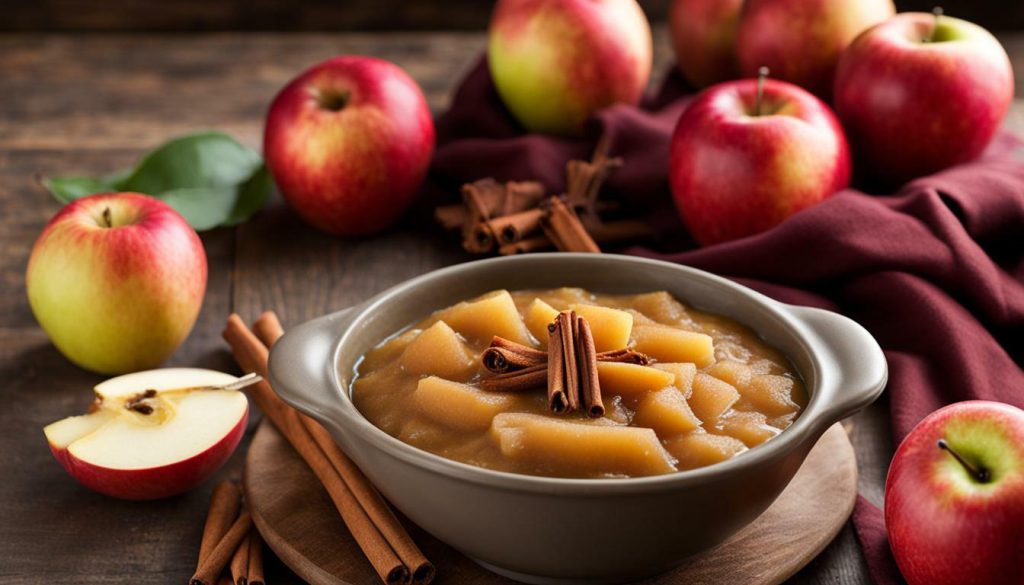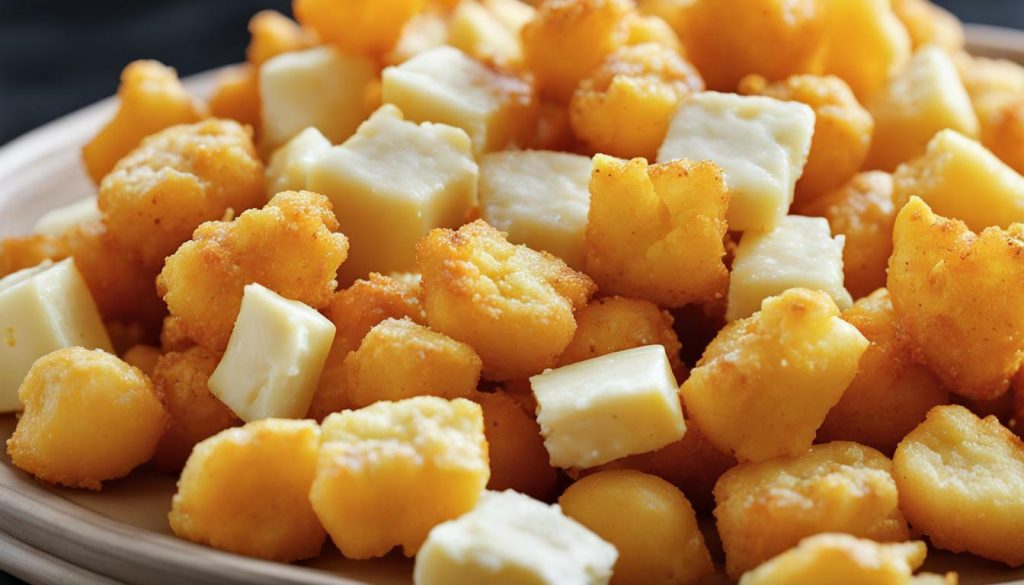Learn how to naturally dye Easter eggs using ingredients found in your pantry and create a vibrant, eco-friendly holiday celebration. Discover the charm of using natural dyes made from beets, turmeric, cabbage, and more, and make your festive season enlivened and brighter. This guide provides step-by-step instructions, tips, and color formulas to achieve beautiful, all-natural hues on your Easter eggs. Avoid using artificial dyes and opt for these safe, non-toxic options that are both fun and creative. With this natural dye Easter eggs guide, you can create a unique and memorable holiday experience for everyone.
The Tradition of Dyeing Easter Eggs Naturally
The tradition of dyeing Easter eggs has a rich history and holds deep symbolism. For centuries, people have been dyeing eggs as a way to celebrate the arrival of spring and the renewal of life. This practice is not only rooted in religious beliefs but also reflects cultural traditions around the world. By using natural dyes, we can not only honor these cultural practices but also contribute to a more eco-friendly Easter egg decorating experience.
Natural dyeing traditions vary across different cultures, with each one having its own unique methods and symbolism. In some cultures, red eggs symbolize the blood of Christ, while in others, green eggs represent new life and fertility. By embracing natural dyes made from fruits, vegetables, and spices, we can tap into the historical and artistic elements of this tradition.
Using natural dyes for Easter eggs also allows us to take a mindful approach to our holiday celebrations. By avoiding artificial dyes that may contain chemicals and toxins, we can ensure that our festive decorations are safe for everyone, including children and pets. Plus, natural dyes offer a wide range of colors, from soft pastels to vibrant hues, allowing us to unleash our creativity and make our Easter eggs truly unique.
The Magic of Natural Ingredients for Easter Egg Dye
Embrace the magic of natural ingredients by using everyday produce and spices to create vibrant Easter egg dyes. With ingredients found in your kitchen, you can transform plain eggs into works of art. From deep reds and vibrant oranges to soft pastels and earthy tones, natural dyes offer a wide range of colors to make your Easter eggs truly unique.
Vegetables like beets and cabbage can be boiled to create rich, saturated colors. Simply simmer them in water with a splash of vinegar, and then strain the liquid to use as a dye. For brighter hues, turmeric and other spices can be ground and mixed with water to create a paint-like consistency.
Fruits such as blueberries and raspberries can also be used to create beautiful hues. Crush the berries to release their vibrant pigments, add some water, and you’ll have a natural dye ready to go. Experiment with different combinations of fruits and vegetables to achieve even more unique colors.
Exploring Spice-Based Easter Egg Dyes
Spices like paprika, cinnamon, and coffee grounds can add warm and earthy tones to your Easter eggs. Brew strong coffee and soak your eggs in the liquid to create a rich tan color. Mix paprika or cinnamon powder with water and vinegar for a reddish-brown hue. Spice-based dyes can give your eggs a rustic and natural look that is sure to impress.
Unleash your creativity and experiment with various natural ingredients to achieve the perfect colors for your Easter eggs. Whether you prefer bold and vibrant or soft and muted tones, natural dyes offer endless possibilities to make your holiday eggs one-of-a-kind.

How to Dye Easter Eggs Naturally: Step-by-Step Guide
I’m excited to share with you a step-by-step guide on how to dye Easter eggs naturally. This eco-friendly egg dyeing technique is not only safe but also allows you to create beautiful and unique Easter eggs. Follow these simple steps to achieve vibrant and all-natural colors on your eggs.
Gather Your Materials
First, gather all the materials you’ll need for the natural dyeing process. You’ll need hard-boiled eggs, natural dye ingredients such as beets, turmeric, and cabbage, vinegar to help the colors set, a pot for boiling the dye solutions, and a set of containers for soaking the eggs in the dyes. Make sure to protect your work surface with newspapers or paper towels to avoid any stains.
Prepare the Dye Solutions
Next, prepare the dye solutions by following the color formulas and combinations provided in the guide. Each ingredient requires specific steps, so it’s important to follow the instructions carefully. Boil the ingredients with water and vinegar to extract the natural colors. Once the solutions have cooled down, strain them into separate containers and mix in the vinegar.
Soak and Dry the Eggs
Now, it’s time to soak the eggs in the dye solutions. Place the eggs gently into the containers, ensuring they are fully submerged. Let the eggs sit in the dye for at least 30 minutes or longer for more intense colors. Remember to rotate the eggs occasionally to ensure even coloring. Once you’re satisfied with the hues, carefully remove the eggs from the dye and place them on a drying rack or paper towels to dry completely.
By following these steps, you’ll be able to dye Easter eggs naturally and create a beautiful display of vibrant and eco-friendly decorations. The safe egg dyeing method ensures that you can enjoy the holiday season while embracing sustainable practices. Get creative with different color combinations and patterns to make your Easter eggs truly unique. Have fun and enjoy the process of creating naturally dyed Easter eggs!
Achieving Vibrant Colors with Natural Dyes
When it comes to dyeing Easter eggs naturally, achieving vibrant and eye-catching colors is the ultimate goal. Fortunately, with the right techniques and a bit of creativity, you can transform your plain eggs into stunning works of art. In this section, I’ll share some tips and tricks to help you achieve intense color saturation and explore various design options using natural dyes.
Color Guide for Natural Dyes
One of the keys to achieving vibrant hues with natural ingredients is understanding the color guide for natural dyes. Each ingredient produces a specific color, and by combining them, you can create a wide range of shades. For example, beets can yield a beautiful pink or red color, while turmeric creates a vibrant yellow. By experimenting with different ingredients and proportions, you can unlock a world of color possibilities.
To ensure intense color saturation, it’s important to consider the concentration of the dye, the type of egg used, and the duration and number of dips in the dye. Generally, the longer the eggs soak in the dye, the more vibrant the color will be. Additionally, using white or pale-colored eggs will result in brighter shades compared to brown eggs.
Natural Dye Design Options
With natural dyes, you have a variety of design options to explore. One popular technique is creating patterns with wax or rubber bands before dyeing the eggs. By applying wax on the eggshell or tightly wrapping rubber bands around it, you can create unique patterns and designs. Once the eggs are dyed, remove the wax or rubber bands to reveal the contrasting colors and intricate patterns.
Another design option is to use botanical elements or leaves to create a natural pattern on the eggshell. Simply place a small leaf or flower against the egg, wrap it tightly with a piece of pantyhose, and then submerge it in the dye. When you remove the pantyhose, you’ll be left with a beautiful, nature-inspired design.
Remember, the key to achieving vibrant colors and unique designs with natural dyes is to experiment and let your creativity guide you. Whether you’re creating a rainbow of hues or experimenting with patterns and designs, natural dyeing allows you to create truly one-of-a-kind Easter eggs that will impress everyone.

Tips and Tricks for Natural Easter Egg Dyeing
When it comes to dyeing Easter eggs naturally, there are a few tips and tricks that can help you achieve optimal results. First, be sure to start with clean, white eggs for the best color absorption. Avoid using brown eggs as they may produce different shades due to their natural color. To achieve vibrant and long-lasting colors, consider soaking the eggs in the dye solution overnight or for several hours. This will allow the natural dyes to fully saturate the eggshells.
Preserving Natural Dye Colors
To preserve the colors of your naturally dyed Easter eggs, it’s important to handle them with care. After dyeing, gently pat the eggs dry with a paper towel or cloth instead of rubbing them. This will help prevent the colors from smudging or fading. It’s also a good idea to avoid placing the eggs in direct sunlight or exposing them to excessive heat, as this can cause the colors to fade over time. Storing the eggs in a cool, dry place will help maintain their vibrant hues.
Exploring Different Dyeing Techniques
Get creative with the dyeing process by exploring different techniques. For a marbled effect, try adding a few drops of vinegar to the dye solution and swirling the colors before adding the eggs. This will create unique patterns and designs on the eggshells. Another technique to consider is wrapping the eggs in onion skins or using rubber bands to create stripes. These methods can add texture and visual interest to your naturally dyed Easter eggs.
Long-Lasting Natural Dye Results
To ensure long-lasting results, you can also apply a thin layer of vegetable oil to the dyed eggs. This will help seal in the colors and give the eggs a glossy finish. Additionally, be sure to handle the eggs with clean hands to prevent any oils or dirt from transferring onto the eggshells. By following these tips and tricks, you can enjoy beautifully dyed Easter eggs that showcase the vibrant colors of natural dyes.
Enjoying Your Naturally Dyed Easter Eggs
Now that your Easter eggs are beautifully dyed using natural ingredients, it’s time to enjoy them in various ways. Here are some tips on how to make the most of your naturally dyed eggs:
1. Storing your natural dyed eggs: To maintain their freshness, store your dyed eggs in the refrigerator. Place them in a covered container to protect them from absorbing any odors. They can be safely stored for up to one week, allowing you to enjoy them throughout the holiday season.
2. Eating your natural dyed eggs: Incorporate these colorful eggs into your meals and snacks! Create delicious recipes such as deviled eggs, egg salad, or add them as a vibrant topping to salads and sandwiches. The natural dyes will add a visually appealing touch to your dishes and elevate your culinary creations.
3. Engaging in natural dye Easter egg crafts: Don’t let the leftover natural dyes go to waste! Get creative and explore fun craft ideas using your dyed eggs. You can create beautiful Easter egg decorations by embellishing them with ribbons, stickers, or glitter. Get the whole family involved in painting or drawing on the eggs to make personalized artwork. The possibilities are endless, and these crafts will add an artistic touch to your holiday decor.
Enjoy the fruits of your labor and celebrate the joy of Easter with your naturally dyed eggs. From storing and eating them to engaging in craft activities, these eggs are sure to bring vibrant color and memorable moments to your holiday celebrations.
FAQ
What are natural dyes for Easter eggs?
Natural dyes for Easter eggs are made from ingredients found in your pantry, such as fruits, vegetables, and spices. They are an eco-friendly and non-toxic alternative to artificial dyes.
How do I make natural dye for Easter eggs?
To make natural dye for Easter eggs, you can use ingredients like beets, cabbage, turmeric, and onion skins. Simmer the chosen ingredients in water, strain the liquid, and use it to dye the eggs.
Are natural dyes safe for egg dyeing?
Yes, natural dyes are safe for egg dyeing. They are non-toxic and do not contain any harmful chemicals. They are a great option for a fun and creative Easter egg dyeing experience.
How do I achieve vibrant colors with natural dyes?
To achieve vibrant colors with natural dyes, you can adjust the concentration of the dye, choose the right type of egg, and dip the eggs multiple times for a longer duration. Experimenting with different dyeing techniques can also enhance the vibrancy of the colors.
How can I make the natural dye colors last longer on the eggs?
To make the natural dye colors last longer on the eggs, you can add a tablespoon of vinegar to the dye solution before dyeing the eggs. This will help the colors adhere better and stay vibrant for a longer time.
How should I store naturally dyed Easter eggs?
To store naturally dyed Easter eggs, place them in a covered container in the refrigerator. This will help maintain their freshness and prevent any unwanted odors from affecting the eggs.
What can I do with leftover natural dyes?
Leftover natural dyes can be used for various crafts and activities. You can create colorful Easter egg decorations or artwork, or even use them to dye fabrics or other materials. Let your creativity flow!






